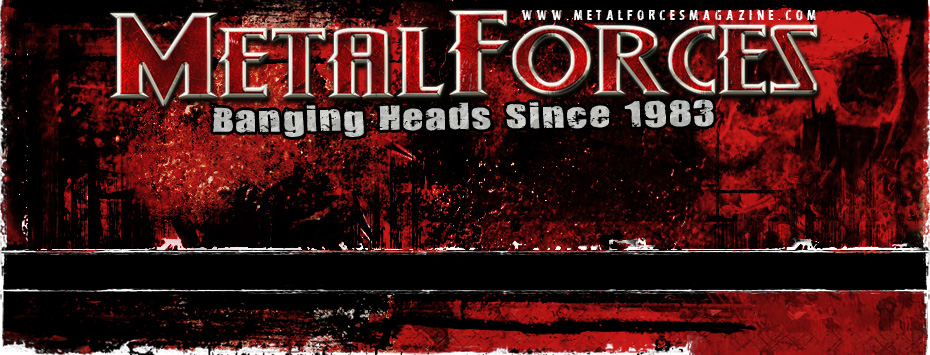
CANNIBAL CORPSE – 1988-2013 (25 Years Of Metal)
Anthony Morgan
March 2013
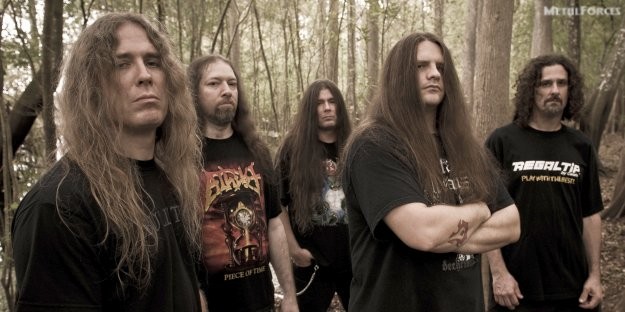 Cannibal Corpse (l-r): Alex Webster, Rob Barrett, Patrick O’Brien, George ‘Corpsegrinder’ Fisher and Paul Mazurkiewicz |
![]()
Tampa, Florida-based death metal outfit Cannibal Corpse formed in December 1988, its members pooled from two Buffalo, New York-based groups, namely Beyond Death and Tirant Sin. The ensemble’s inaugural line-up consisted of bassist Alex Webster, guitarists Jack Owen and Bob Rusay, drummer Paul Mazurkiewicz, and vocalist Chris Barnes. The latter trio had earlier figured among Tirant Sin’s ranks, Alex and Jack having plied their trade in Beyond Death.
“I was excited to be jamming with those guys,” Alex remembers. “Beyond Death was more of a hardcore crossover kind of thrash band, whereas me and Jack were more interested in the darker kind of thrash and death metal stuff. We liked Sodom, Possessed, Death, and Kreator, and so we were into thrash but a little bit more of the thrash that was almost death metal. We did like some crossover bands too, but that was more the other two guys in the band. Darren (Pfeifer, drums) and Frank (Lombardi, guitars and vocals) were really a lot more focused on bands like D.R.I., S.O.D., and those kinds of bands. There was this other band in town called Tirant Sin. Now those guys were really doing more death metal-oriented kind of thrash, but this was all in the very beginning where these genres weren’t quite as clearly defined. Those guys sounded a lot more like Sodom, Kreator, or Slayer. They ended up needing a guitar player and a bass player, and Jack and I were getting ready to leave our old band Beyond Death.
“It was December of 1988, and it was the very beginning of the month. I remember it, because it was the first practice that those guys had together. I missed the first Cannibal Corpse practice because I had to have my tonsils out (laughs). I was in the hospital, because I had been sick or whatever and they had to go. Those guys got together. Jack got together with them, and reported back to me ‘Yeah, it’s gonna be cool. It was really fun jamming with those guys.’ We started getting together throughout that month, in December of 1988. That was the beginning of Cannibal Corpse – December 1988.
“I think we recorded our first demo in February of ’89, and then did our first show shortly after. A lot of that stuff I remember fairly well, even though it was a long time ago. Any time you have a first you remember it. I do remember our first show, and I do remember recording our first demo. I was very excited; I was excited to be jamming with guys where we were all heading in the same direction. In Beyond Death we were good friends and had a good time jamming together, but one half of the band wanted to do one kind of metal and the other half wanted to go in a different direction.
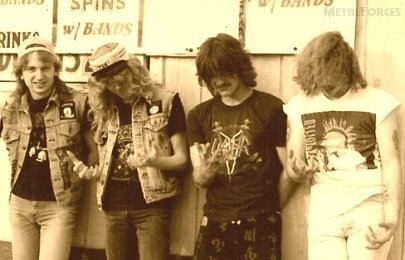
|
“With Cannibal Corpse, from the get go we were all focused on going in a darker direction. We didn’t really want any of those crossover elements in there; we wanted darker content, death and thrash but really death metal. We were starting to get into Morbid Angel, and we were already into Death and that sort of thing. Once we made Cannibal, we knew it was gonna be a death metal band. Even though we had a thrash background, we knew that death was what we wanted to do.”
The four-stringer christened the group. “I was just sitting around thinking about names – we were all thinking about names,” he recalls. “I think it was in December, because we named the band within the first month that we were together. We were just sitting around thinking about it, and everybody would go home and think about names. We kept coming up with ideas. Paul came up with the name Malevolent Impalement. I’m so glad we didn’t use that, because of course there are our buddies Malevolent Creation. That would’ve just been bad. They had already moved down to Florida at that time, so Paul was like ‘That’s a cool name. We could just use Malevolent Impalement. Those guys are way down in Florida, so what’s the difference?’
“The fact that the band names were similar didn’t matter to him (laughs), but then I think within a day or two I came up with Cannibal Corpse and the guys were like ‘Yeah, that’s the name.’ It just stuck. I was just thinking about Night Of The Living Dead (1968). Scream Bloody Gore (May 1987) by Death had had zombies on the cover, and Necrophagia’s Season Of The Dead (February 1987) had had zombies on the cover. Both of those bands had songs about zombies and I love zombie movies, so to have a band with a zombie sort of name just seemed perfect.”
March 2013 box set Dead Human Collection: 25 Years Of Death Metal marks Cannibal Corpse’s 25th anniversary, a milestone the quintet will reach in December. “I don’t exactly know what is in the European version of the box set because we had some censorship to contend with there, with Germany being one of the biggest countries over there,” Alex laments. “It is also the one where we have the most censorship problems, so the content of the box set is likely curtailed to fit the situation in Germany, and that has likely affected the content of the box set throughout the UK and Europe unfortunately. There’s a greatest hits, anthology kind of thing in place of there being all 12 albums I believe; since several of the albums are banned in Germany, there’s an anthology CD.
“In North America I know what the box set is – it was pretty easy in the States. We just said ‘Here you go. Put the 12 albums in there.’ That’s our career really, our 12 studio albums. We have done a couple of other things that aren’t in there, but it wasn’t that hard. It’s actually 13 CDs; all 12 studio albums, plus a 13th CD which is a live album. There’s a picture disc of the live album, and prints of all of the album cover artwork. There’s a calendar in there, which also features each album throughout the months. It just seemed like a good idea, 12 albums, 12 months, and this being our 25th anniversary year. It seemed like a cool idea to have a calendar, with one album cover for each month. We used some additional artwork by Vince.
“I believe that’s what’s in there, but I’m not sure. I think that might be it. It’s a collection of our 12 studio albums and it celebrates all 12 of them, and the artwork that corresponds with them. It’s a celebration of the studio releases, but we’ve also had a live album and DVDs and things like that, and that stuff isn’t included. If we had also included all of the DVDs we’ve done it would’ve probably been quite a bit more expensive, so this is strictly an audio, studio release box set. It’s a pretty good deal; I believe in the States it’s like a $100, so that winds up making each CD something around $7 to $8.”
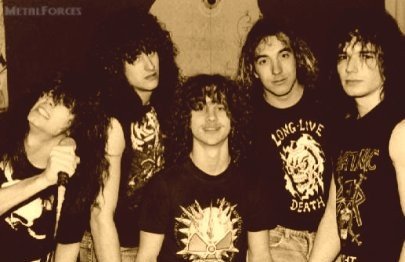
|
Entitled Torturing And Eviscerating Live, the set’s live disc collects its respective tracks from two past concert performances. One half was recorded on May 15th, 2010 at Milwaukee, Wisconsin’s The Rave during tour commitments for February 2009’s Evisceration Plague, the other half cut on August 17th, 2012 at Tampa, Florida’s The State Theater during tour commitments for March 2012’s Torture.
“We’ve got a really great soundman named Pete Robertson, and he had done a lot of live recordings of us on our 2010 tour that we were taping for Global Evisceration (March 2011),” the mainman informs. “We were originally thinking of doing a CD packaged with the DVD for Global Evisceration, so we taped additional live shows. That way we could just really pick the perfect performances from each one instead of just using the two from the video, because we had about 20 live shows that he taped on that tour. He said the one that really just sounded great was Tampa, so we used a lot of songs from the Tampa one. We also recorded a couple of more live shows on one of the recent Torture tours. I think it was probably part of the Summer Slaughter tour when we were recording, and that stuff turned out really good too.
“What we did was once we had these two shows… I think one was in Milwaukee that was really good from 2012, and then the other one from 2010 was the Tampa one… We picked one song from each album and had them go in sequence, starting with a song from Eaten Back To Life (August 1990), and then a song from Butchered At Birth (July 1991), and then a song from Tomb Of The Mutilated (September 1992), and so on, ending with the song ‘Scourge Of Iron’ off of Torture. So yeah, it’s a 12-song live album with one song from each album. Part of it’s from the Evisceration Plague tour, and part of it’s from the Torture tour. That’s why we called it Torturing And Eviscerating Live, because to me it sounds like a name for the album and it seemed like an appropriate one.”
Audio recordings from live performances are taken, albeit occasionally. “As far as doing live recordings, our soundman Pete has a recording rack with whatever gear he needs to record,” Alex shares. “Sometimes he’ll bring it, but most of the time he won’t. We wouldn’t bring it to Europe, because it’s too heavy. It would cost a lot of money to bring it over, so it’s just easier to do any live recordings we do in the States. He’ll still bring it if he specifically knows that we need to record for some reason, but if not, we just won’t bother to record it. I will sometimes do video recordings. For shows, I have a little HD camera that has microphones on it. Those video recordings are for my own personal record, and to possibly use as bonus material on a DVD in the future. As far as doing multi-track recordings though, we usually won’t do that unless there’s a reason.”
A Cannibal Corpse full-length which consists of rare numbers has yet to be issued. “I think for the European version, since we’re being limited by censorship I believe there might be a rarities disc whereas there isn’t that on the US version,” the rhythmist speculates. “It’s difficult for us to be dealing with these two different releases, really. It’s kind of aggravating, but it’s the way it’s gonna be. So yeah, I do believe that they’re gonna try to find some rare stuff for the European box set to make up for the fact that not all of the 12 albums are gonna be on there because of the censorship issues. I think the rarities might be some cover songs that we’ve done over the years, but I’m not sure what else. The problem for us is that we’ve already released a 15-year box set a few years ago obviously, and we don’t want there to be too much repetition between the two.”
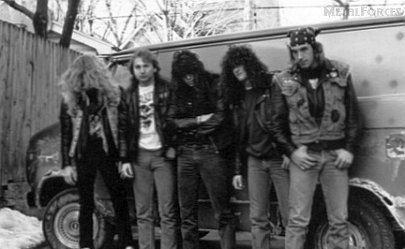
|
No cover interpretations by the band remain unreleased. “I think everything’s been released one way or the other,” Alex muses. “Some of them were released as Japanese bonus tracks, because for a long time we’ve needed an extra song for the Japanese release and so we’ve done a cover. Some of them have appeared on the other box set and various things like that, on EPs and so on. A lot of this is stuff that people who’ve been fans of us for awhile already have. To be honest, there’s not a whole lot of new stuff in the vault that we’ve been able to find. We’ve already put out a lot of that stuff.”
Artwork duties have always fallen to Vince Locke. “He’s done artwork for all of the albums, and then on top of that he’s done artwork for our EPs and a number of unique T-shirt designs too,” the co-founder augments. “So yeah, as an artist he’s captured what our band is visually. His artwork has a Cannibal Corpse look to it; the Cannibal Corpse look is his artwork. I was just doing another interview where I mentioned that we’ve never really had to coach him very much. He was just already on the same page as us having been involved with his own comic Deadworld, which was a comic back in the late 80s, early 90s about zombies taking over the earth. It was published independently by Caliber Press over here in the States, so with him having that horror background, he was just on the same page with us from the beginning. Obviously though, I think our music is what has kept people interested in our band, but seeing Vince’s artwork was the first thing that they saw.
“In fact, I remember when Chris brought the original artwork for Eaten Back To Life to practice. It was obviously several months before Eaten came out, and he had just received it from Vince via regular mail of course back in 1990 – before people were using the internet a whole lot. I looked at it, and I said ‘Wow. This album might be good, because I would buy an album that had that cover. As a metalhead who’s into horror, The Evil Dead (1981), and that sort of thing, that is an album I would not hesitate to buy, just based on the cover.’ Vince’s artwork definitely attracted people to our band, and I believe it was our music that kept them interested (laughs). Certainly, Vince’s artwork did a really great job of getting people interested in our band.”
Vince’s artwork pieces have previously encountered censorship issues. “Our first album had just the one cover, and then for Butchered At Birth we had one cover,” Alex begins. “Halfway through the album cycle for Butchered At Birth though we started running into all of these censorship problems, so for Tomb Of The Mutilated we had two different covers. For The Bleeding (April 1994) the cover wasn’t so gory; it still needed to be censored, but we just decided to do a close-up of one of the bloody sections of the main zombie. From thereon out, we kind of had two different covers. Either it would be two separate pieces of art, or it would be a gory piece of art and a close-up of a section that was less gory.
“We’ve done that throughout our career, but the solution that we’ve come up with lately is to just put something over the top of the cover which just reveals a small section and that’s what we did for Torture. It just reveals a small gory section, but then once you buy the CD and take off the shrink-wrapping and open it up, you get to see the real artwork – the whole artwork. That’s been a pretty good solution to censorship problems we’ve had as far as artwork is concerned.”
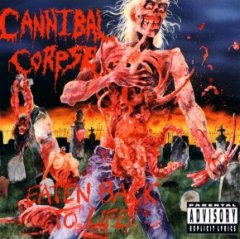
|
Each of Cannibal Corpse’s studio endeavours will undergo picture disc reissue on a monthly basis throughout 2013. Eaten Back To Life arrived in January, Butchered At Birth surfacing in February. Tomb Of The Mutilated’s picture disc reissue occurred in March, the group’s picture disc reissue campaign scheduled to conclude in December with Torture’s picture disc reissue. “So far, everybody seems really happy about them,” the bassist enthuses. “Yeah, they look great. We just decided to have it be artwork without throwing the band’s logo over the top of Vince’s art, because by this point everybody knows what band it is when they see that piece of art. We didn’t feel we needed to slap the logo on there. There have been picture disc releases in the past which I believe have been out of print for some time, and on those previous releases most of the time the band’s logo would be superimposed on top of Vince’s art.
“We just decided to let Vince’s art stand on its own for these covers though. If you see the Butchered At Birth artwork, you know who it is – you don’t need to have the words ‘Cannibal Corpse’ slapped on top of it at this point. Maybe you did 20 years ago when it first came out, but now some of those pieces of art are iconic enough that you don’t really need it. I think Vince is probably as excited about this box set as we are, because it’s a display of what we’ve done for 25 years. It’s also a display of the artwork that he’s done for us for 25 years though, so it’s pretty cool for the both of us I think.”
Of Cannibal Corpse’s 12 full-lengths, Alex cites Torture as his personal favourite. “I feel like Torture probably has our best performances, and our best songwriting,” he compliments. “Also, it’s my favourite production out of the records that we’ve done. No though, I’m proud of all of them for different reasons. Each album that we’ve done represents the best effort we could make at that time. We really have always worked hard on our records. We’re proud of all of them, but maybe the latest one Torture. I think it’s the best representation of what we wanna do, and I’m quite proud of it.”
Discounting Torture, the four-stringer’s favourite is more difficult to select. “Bloodthirst (October 1999) turned out really good,” he ponders. “The Bleeding was really good too, so maybe one of those two.”
Alex views each outing in a favourable light. “I’m pretty proud of all of them,” he judges. “Like I said, they all have songs that we worked really hard on. Maybe Gore Obsessed (February 2002) could have turned out a little better, because I think the production’s a little uneven on that one. Neil (Kernon) did a good job on it, but I don’t think we really gelled with him a 100% until the following album The Wretched Spawn (February 2004). That album sounded great, but maybe out of all of them there are things about Gore Obsessed that could have turned out better. I’m still proud of that one too though; there’s a bunch of stuff on there that we’re really proud of.
“So yeah, I’m happy with all of them. We don’t have an album where we veered away from our style or anything; all of our albums are pure death metal, all horror death metal. They all are true to the original mission that the band set out on, which is a gore-oriented, super-heavy band, and we haven’t strayed from that. It’s not like we’ve had some album where we tried to be an industrial band, or an alternative band, or something like that (laughs). I’m proud of all of the albums.”
A Black Album-style opus (Metallica’s August 1991 self-titled record, generally considered intentionally commercial) doesn’t figure among the catalogue. “No, not at all,” the mainman seconds. “They’re all really pretty consistent, in my opinion. There’s nothing in there where we have some really crappy commercial song that we’re embarrassed of. We’re proud of all of the songs on each album.”
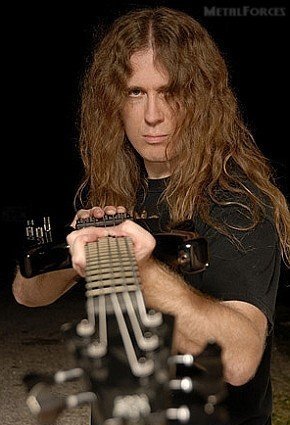
|
Though by no means commercial fare, a number of heavy metal aficionados are familiar with signature tune ‘Hammer Smashed Face’ (from Tomb Of The Mutilated). “We’re so happy that we have a song that people consider a classic, because not every band is so lucky,” Alex appreciates. “There have even been bands who’ve been around for quite awhile that don’t really have any classic songs, but we have a couple. ‘Hammer Smashed Face’ and ‘Stripped, Raped, And Strangled’ (from The Bleeding), and then even some of the newer ones are becoming classics in their own way, like ‘Make Them Suffer’ (from March 2006’s Kill) for example. That one has really has turned into a classic, and maybe ‘Unleashing The Bloodthirsty’ (from Bloodthirst) is another one from the newer albums.
“Yeah, people think that ‘Hammer Smashed Face’ is our best song. I wouldn’t necessarily agree with that, but it’s definitely one of our really good songs (laughs). If that’s the one that’s considered to be our classic song, then I’m fine with that because it is a really good one. I love seeing people go crazy to it; it’s a song that we’re basically gonna always end our set with, that one and ‘Stripped, Raped, And Strangled’. They’re two fan favourites, and they’ve always got such a great reaction. It’s really hard to even contemplate ending the set with any other song. It just works so perfectly at the end.”
Commemorative releases have included the involvement of inaugural frontman Chris Barnes, whose voice occupied the microphone for Cannibal Corpse studio full-lengths one through four. “We had him on our DVD (July 2008’s Centuries Of Torment: The First 20 Years), for example,” the rhythmist cites. “We did a 20-year DVD. As you’re probably gathering at this point, we’re probably gonna celebrate every five-year anniversary of the band being together (laughs). I’m sure we’ll do something fun for our 30th anniversary, and our 35th when we get there. Who knows if we’ll get beyond our 35th, but yeah, the 20-year DVD that we did which chronicled the history of the band had Barnes all over it. We had to make sure he got involved; he’s been out of the band since 1995, but his lyrics and the creative drive that he had in the beginning really helped shape the lyrical direction that the band went in. He really came up with some very disturbing lyrics, and it’s a big part of the band’s history. It’s important to have him involved with these retrospective kinds of things in my opinion.
“He wasn’t in the band for all that long; when you look back at it it seemed like a long time at the time, but really when you look back now he was in the band for the first seven years and we’ve been around for 25. George has been our singer for about twice as long – actually, more than twice as long than Chris was. Chris made an impact, though. He was definitely a very creative guy. We obviously had our differences, but he did add a whole lot to the band. Out of all of the ex-members, he’s obviously the one that people talk about the most and he definitely needs to be involved when we’re doing retrospectives.”
Related Posts via Categories
- CANNIBAL CORPSE – Chaos Horrific (2023) | Album / EP Reviews @ Metal Forces Magazine
- CANNIBAL CORPSE – Sadistic Embodiment (September 2014) | Features / Interviews @ Metal Forces Magazine
- CANNIBAL CORPSE – A Skeletal Domain (2014) | Album / EP Reviews @ Metal Forces Magazine
- CANNIBAL CORPSE – 1988-2013: 25 Years Of Metal, Part Two (March 2013) | Features / Interviews @ Metal Forces Magazine
- CANNIBAL CORPSE – Torture (2012) | Album / EP Reviews @ Metal Forces Magazine
- CANNIBAL CORPSE – Demented Aggression (March 2012) | Features / Interviews @ Metal Forces Magazine
- CANNIBAL CORPSE – Skewered From Ear To Eye (March 2011) | Features / Interviews @ Metal Forces Magazine
- CANNIBAL CORPSE – Evisceration Plague (2009) | Album / EP Reviews @ Metal Forces Magazine
|
|
